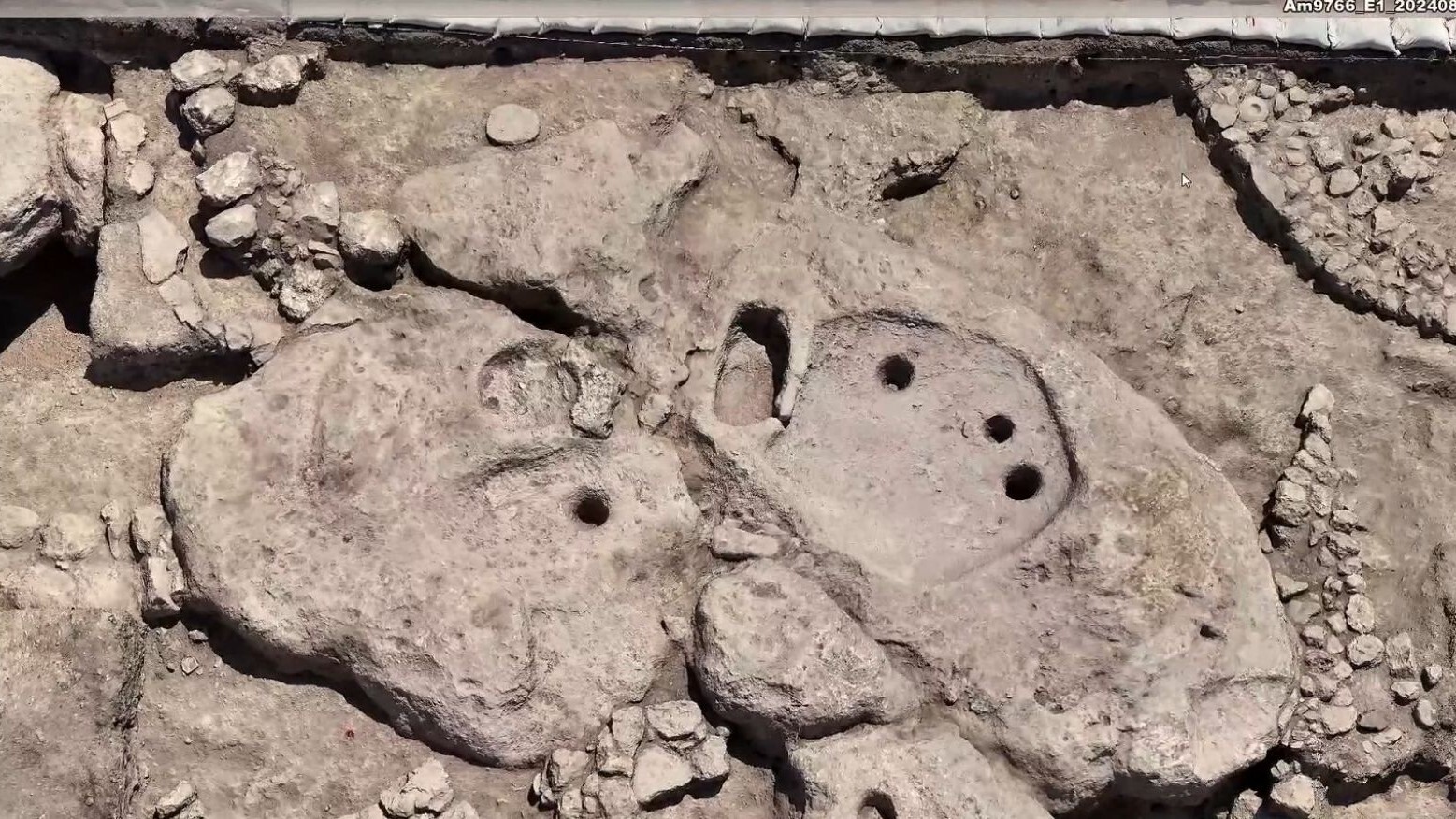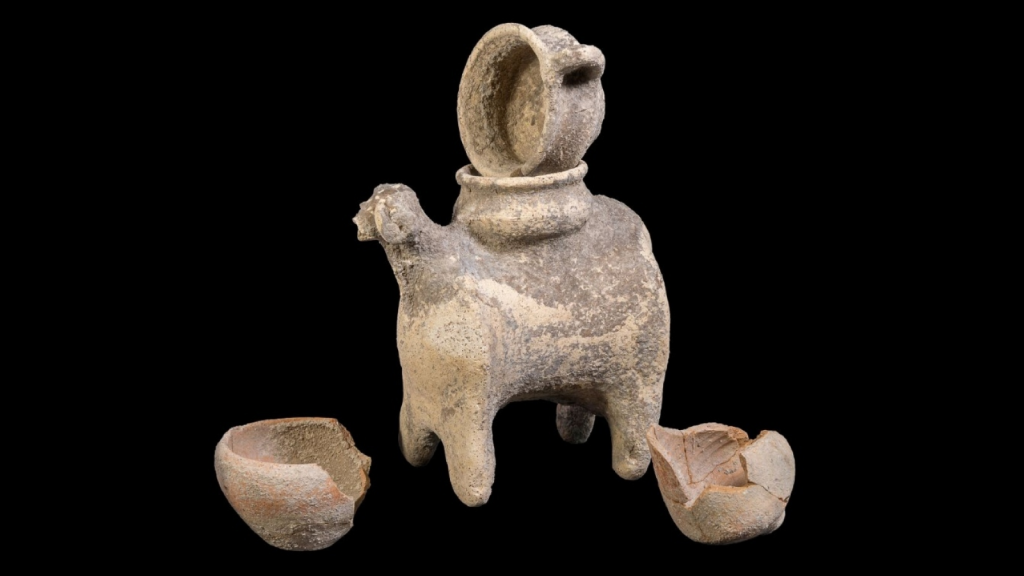While excavating near the ancient city of Armageddon in Israel, archaeologists unearthed a 3,300-year-old Canaanite “tea set,” a dollhouse-sized temple, and one of the oldest known winepresses in the world.
The tea set includes a teapot shaped like a ram and a few small bowls that were buried together during the Late Bronze Age. The ram’s head, which was molded into the spout, would have been tilted forward so liquid spilled out of its mouth.
Animals such as sheep, donkeys and goats were highly prized in Canaan, with evidence showing that during part of Egypt’s Old Kingdom (around 2649 to 2150 B.C.), some of these animals were raised in Egypt and then imported into Canaan, some of them for sacrificial purposes.
The Canaanites likely buried the teapot and bowls as ritual offerings, according to the statement. Archaeologists unearthed the tea set near Megiddo, also known as Armageddon, ahead of road construction in the Jezreel Valley.
Other Canaanite cult offerings recovered in several small pits during the excavation included storage jars, and imported jugs from Cyprus. These artifacts were likely buried by local people, such as farmers who couldn’t enter the city or the nearby Canaanite temple at Tel Megiddo (“Tel” means hill). Instead, they may have chosen to bury these offerings, and possibly agricultural produce, at a rock outcrop that may have served as an outdoor altar, the statement reported.
The buried mini-temple, made of ceramic, is also 3,300 years old. “This is what the real temples in the Canaanite Late Bronze Age may have looked like,” Amir Golani, one of the IAA excavation directors at the site, said in a translated video.
Excavations at Armageddon
People have lived at Megiddo since roughly 7000 B.C. Many battles were fought there over the years, and the Book of Revelation, which calls the site Armageddon, predicted that the final battle at the end of time would happen there.
The excavation reveals artifacts from two different periods at Megiddo: one from the Early Bronze Age (or the Early Canaanite period), around 5,000 years ago, and the others, including the tea set, from the Late Bronze Age (or the Late Canaanite period), around 3,300 years ago.
“Megiddo has been excavated for over a century,” the researchers wrote. But while it’s long been known as a site of “ancient urbanism and Canaanite worship,” the new excavations have now revealed a new area between the ancient city and activities that took place around and outside of the city, they wrote.

The team was surprised to discover a 5,000-year-old small, dug-out wine production press, one of the oldest of its kind known in the world. The press had been carved into the rock, with a sloping surface where the grapes were tread on, which then led to a collection vat.
“This winepress is unique, one of very few known from such an ancient period when urbanization first took place in our region,” Golani and Barak Tzin, an IAA excavation director at the site, noted in a joint statement. “Until now, indirect evidence indicated that wine could have been produced 5,000 years ago, but we did not have conclusive proof of this — a ‘smoking gun’ that would clearly show when this happened in our area.”
The team also unearthed many residential buildings around the winepress, which indicates that the winepress was likely important to the community.

